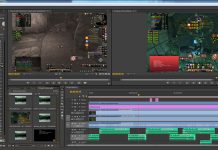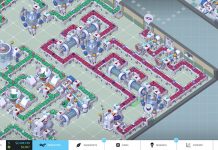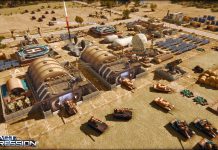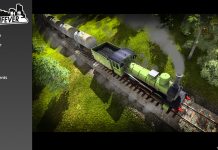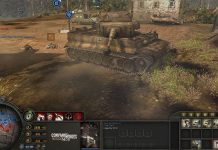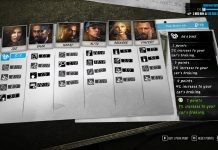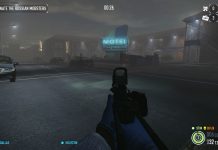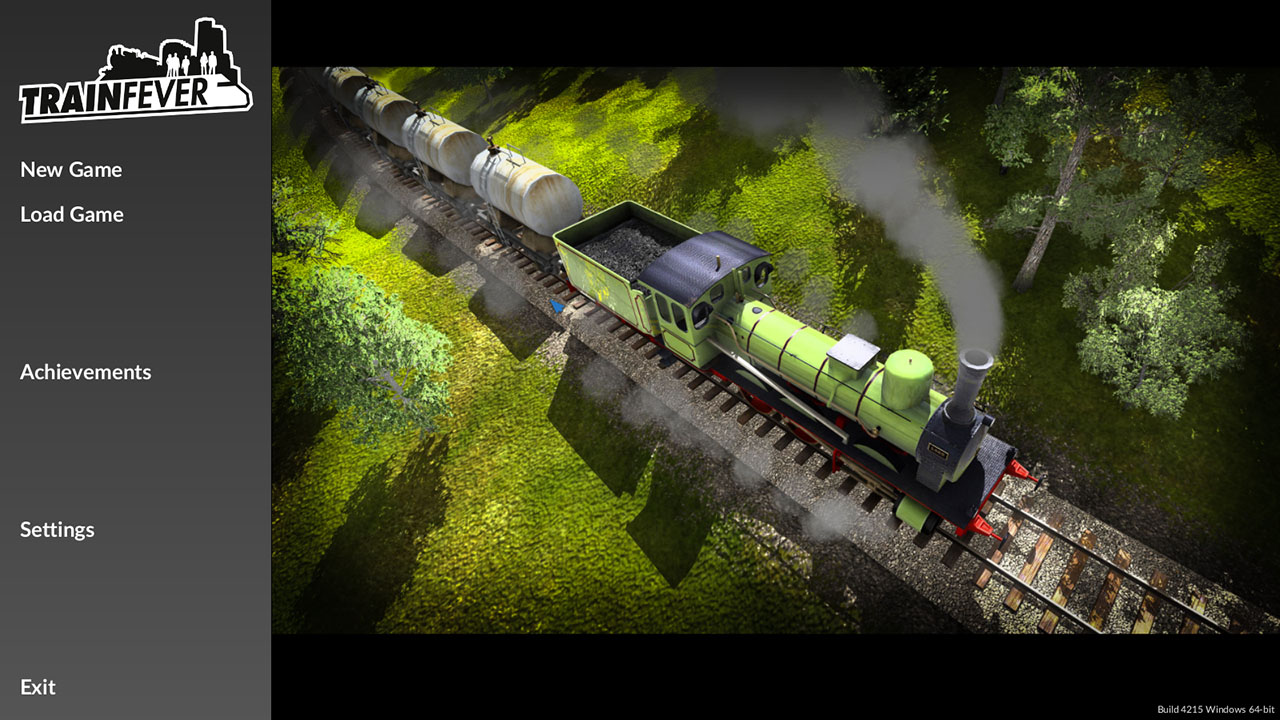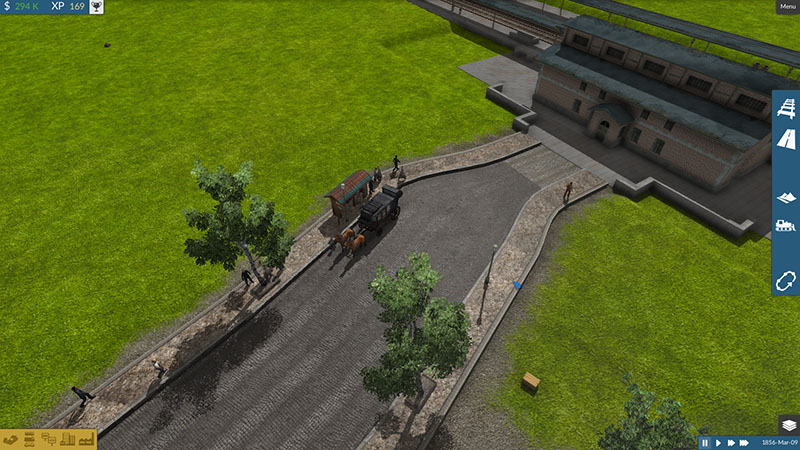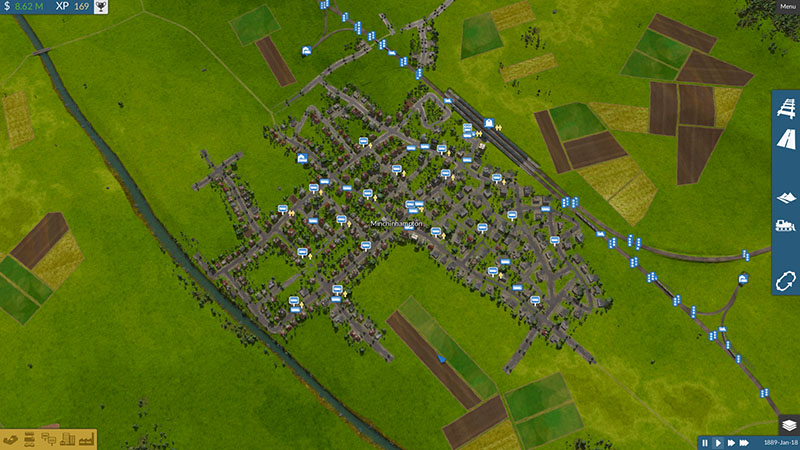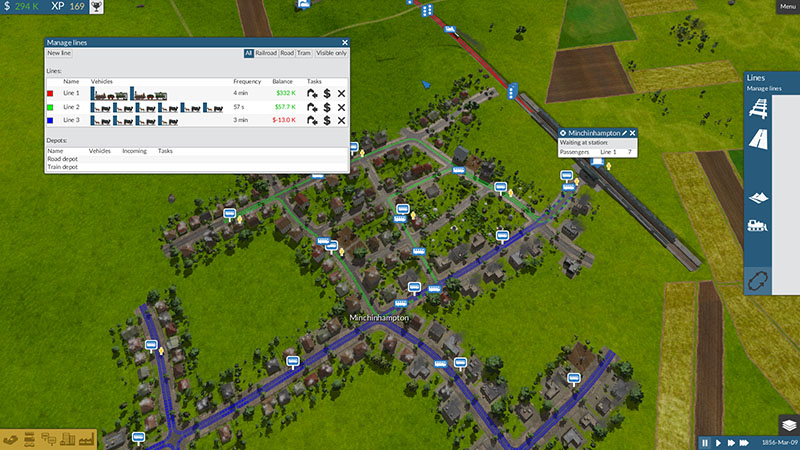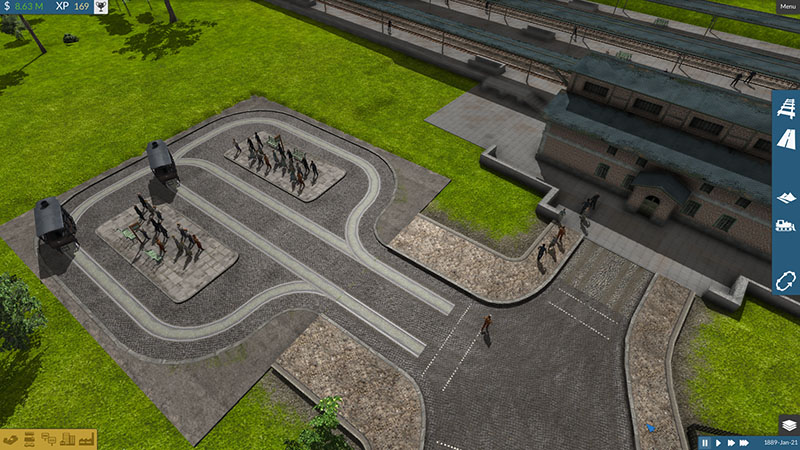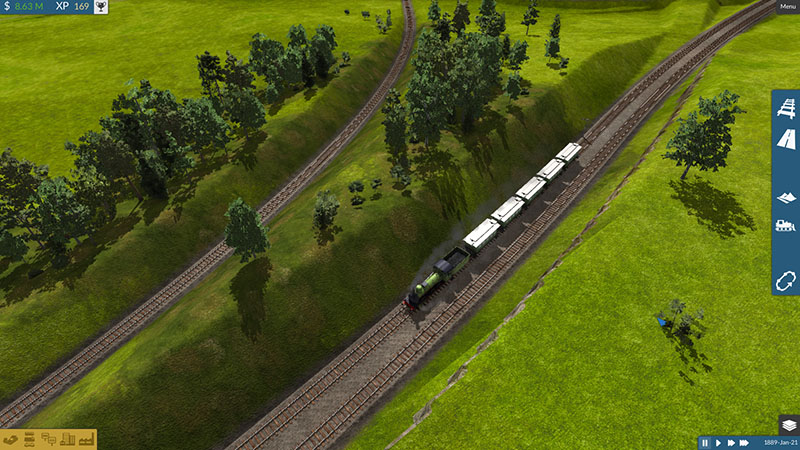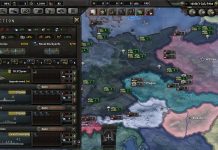Train Fever is an economic/management simulator. Starting in 1850 you will connect different towns with railroad connections. These connections will allow inhabitants from one town to visit and work the other towns. When connected towns start to grow and spawn new roads, factories and residencies. You can transport more traffic to your railroads by creating bus routes, bringing the inhabitants to your station.
Starting in 1850
Train Fever starts in 1850. Meaning you have access to horse carriages and steam trains. At this point in time things move rather slow. The Horse Carriages have a top speed of 18 Km/h and the first train can go 40 Km/h. Obviously for the inhabitants this is a fast alternative to walking.
A horse carriage
During the game, time will progress and you will unlock modern and faster transportation options. In 1873 you will unlock a steam-driven bus. In 1901 you will see the first electric street tram. All of these transport units are quite detailed. As vehicles get more powerful, you can transport passengers or cargo at higher speeds. Unfortunately for you the running costs also increase significantly.
Making money by connecting towns
There are no real objectives in Train fever. Basically it is a sandbox game where expanding is your only goal. To do this you will need money.
To make some money, we will be transporting inhabitants from Eastleigh to Minchinhapton. For this purpose I have constructed a railway station in both towns and connected them with railroads. I opted for a dual track with signals that allows me to split the track into segments. Meaning multiple tracks can run on the same line because they use the tracks in one direction. This did however almost completely deplete my bank balance.
Railroad connection between two towns with signals
I also constructed a bus line in the southern town. The purpose of this bus line is to make it easier for inhabitants to move around. Making it more likely that they will use our railway line.
Bus line 2 and 3 (using horse carriages)
The game reports the “frequency” for each line. Indicating how long an average inhabitant would have to wait before it gets serviced. If this number is too high they are better off walking and will not use your services. Add more vehicles to reduce the frequency, but keep in mind that each vehicle has high running costs. If you add too many vehicles you will go bankrupt very quickly.
Dynamic towns
When towns are connected and people start to move around things start to change. People will travel to the adjacent town and fill jobs. This causes the town to spawn more factories and required roads. In other words; towns grow into cities.
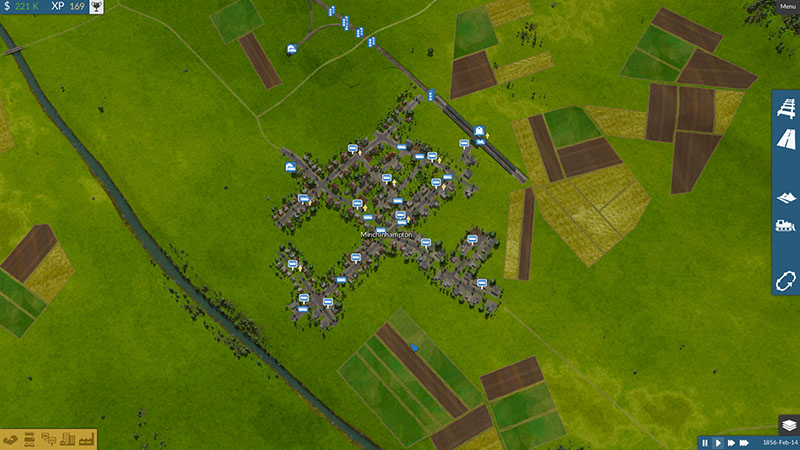
Minchinhampton in 1856
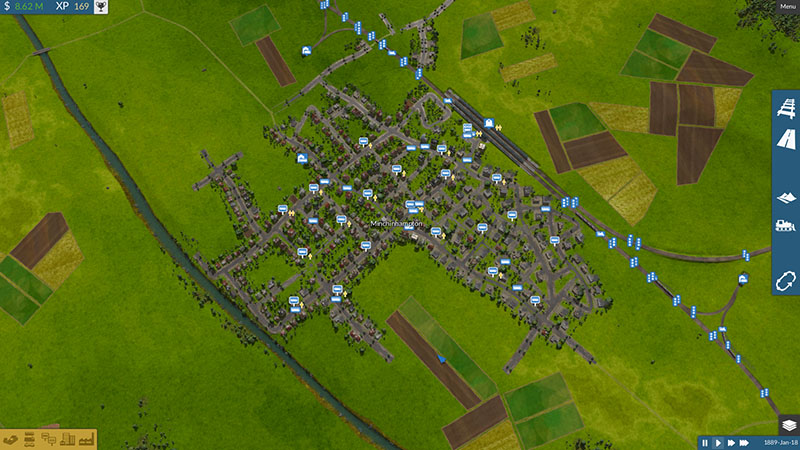
Minchinhamption in 1889
In 33 years Minchinhampton has developed into a rather large town with a big industrial park. The larger town has more inhabitants that travel and the large industrial park attracts additional travelers. In the early years two trains with 24 passenger capacity was plenty. Now this town is serviced by 8 trains with 55 passenger capacity. The profits associated allowed me to repay the loan and have a 8.62M bank balance.
Visual Simulation
The visual simulation of Train Fever is quite good. Passenger flow is animated by walking individuals similar to smaller scale games such as Traffic Giant and Cities in Motion. Vehicle models are quite detailed and the tracks look pretty “real”.
In Train Fever passengers actually walk to and from your station.
Economic Simulation
Unfortunately the economic simulation of Train Fever is not as good as one might expect.
Schools of thought
Traditionally there have been a few “schools of thought” on railroad simulation. In the good old games like Transport Tycoon (1995) and Railroad Tycoon 3 (2003) construction was quite expensive. Terrain was something to take into account. For example building bridges are extremely expensive in both games. Going up slows will significantly slow your trains and hurt your revenue in both games. In Transport tycoon changing terrain was very expensive, in Railroad Tycoon 3 construction on hills is more costly. Meaning you have to really have to think about where and why you extend your trade network.
In more recent games such as Sid Meier’s Railroads (2006) terrain is not as important and basically just adjusts to what you are doing. In Sid Meier’s railroads towns just move aside when you build a railroad though them.
Construction is cheap
Train Fever falls into the second category. Building rails is very cheap. Your bank balance will not even notice building bridges. Building long stretches of rail will just cut through the landscape. There is a cost associated with “terraforming”. If you go crazy and cut through a mountain you can expect a $200K costing railway to costs $1.8M. However compared to its competitors this cost is still extremely low and insiginficant compared to the running costs of trains.
Train fever does not respect terrain; it will just cut through hills without significant added costs.
So if construction is cheap surely something else must limit your ability to expand…
High running costs
In Train Fever they have chosen to give all vehicles extremely high running costs. For example a train costing $201K will cost $120K yearly. To put this in perspective; A simple single rail connection between my towns could be constructed for $150k of rails + 2x $150K for the station.
As the game progreses your trains will become more powerfull and their running cost greatly increase. Simply “upgrading” your train from 40 KMH to ?50 KMH will increase your running cost from $120K to $295K yearly. If you will be transporting the same number of passengers then this makes absolutely no financial sense. In fact you are likely to go bankrupt! Therefore the only way to justifiy new vehicles is a hefty increase in demand.
So how does this effect gameplay?
The high running costs imply that the only way to turn a profit is to effectively load your vehicles.
The first part of this is understanding the capacity of a train. New vehicles have increased power ratings. Meaning you can use more wagons without slowing down the train too much. If the cheapest train can carry 4 wagons (for $120.000) then you will need at least 9 on the more expensive train ($295.000). To offset the increase in wagons the game steadily introduces better passenger wagons that have higher capacity but weigh more. For example the first wagons improve from 6 to 8 to 11 passengers as their weight increases too 5,7 and 10 tons respectively.
The second part is feeding your trains. You can do this by connecting your railroad stations to the towns with bus and tramlines. The better your bus service, the more travelers will visit your railway station.



